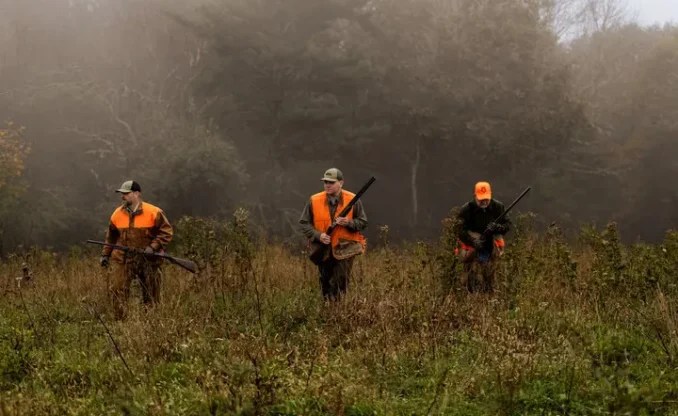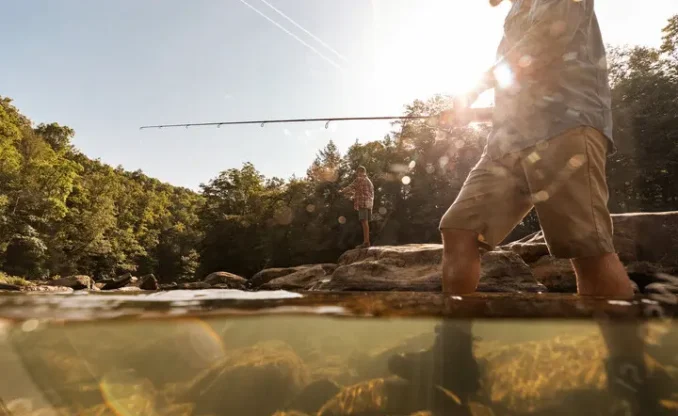Family: Moronidae
Common Family: The Temperate Bass Family
Common Name: Striped Bass
Scientific Name: Morone saxatilis
Ecological Description/Identification
Striped bass are not native to any waters in West Virginia but are native to the Atlantic and Gulf Coast fisheries and estuaries. They are frequently stocked by fisheries managers to establish sport fish opportunities in large lakes where adequate food exists. Gizzard shad, which is abundant in many West Virginia lakes, gets too large for many native sport fish to consume and is a preferred forage fish for striped bass. Shad spend a lot of time off the shoreline where striped bass like to spend time feeding. However, striped bass will feed on crayfish and other invertebrates and fish if those opportunities arise.
Habitat
Striped bass are similar in appearance to another native sport fish, white bass, and the intentional hybrid of the two species, hybrid striped bass. Although striped bass are not sterile, the vast majority of inland lakes where they are stocked do not provide the large river systems needed to allow for their spawning habitats. Striped bass have not been observed to successfully spawn in West Virginia rivers or impoundments. Striped and white bass separation is pretty simple: white bass rarely exceed 16 inches in length, have lateral stripes that become faint as they reach the tail, have a single tooth patch near the back of the tongue, and have deep, short bodies (body depth is frequently greater than one-third of the body length). Striped bass, on the other hand, can obtain lengths beyond 35 inches, have several lateral stripes that extend all the way to the tail, have two distinctly separated tooth patches, and have long, shallow bodies (body depths are less than one-third of body lengths).
Conservation Issues
Their hybrid isn’t as easy to differentiate from stripers. Hybrid striped bass possess several lines that extend all the way to the tail but are broken and staggered, two distinct tooth patches on the tongue that may be closely adjoined and are deeper bodied (body depth is frequently greater than 1/3 of the body length). Of these characters used for aiding in identification of striped bass and the hybrid, the broken lines and the body depth/length ratios are the most useful. Additionally, district staff is willing to help determine species and inform anglers of locations where certain species or breeds of sport fish have recently been stocked.
Facts
As mentioned, adult-sized striped bass are savvy open water predators, focusing mainly on schooling forage fish like shad. Therefore, deeper habitats that focus the concentration of these forage fish are important for targeting this species. Striped bass often feed near points of ambush, like point bars and flooded creek channels, but may also congregate around complex, deeper positioned boulder and wood habitats.
Similar Species
Considering that striped bass are not directly native to any state water, there are no conservation issues for this species in West Virginia. However, given the commercial and recreational pressures placed on this species in the Atlantic Ocean, there is concern for overharvest across the east coast. The availability of striped bass to stock into inland bodies of water for recreational sport fisheries can be dependent on the availability of wild striped bass stocks in the Chesapeake Bay. Ultimately, conservation of striped bass in that region influences fish management opportunities in West Virginia because their brood fish produce our fingerlings for distribution.



